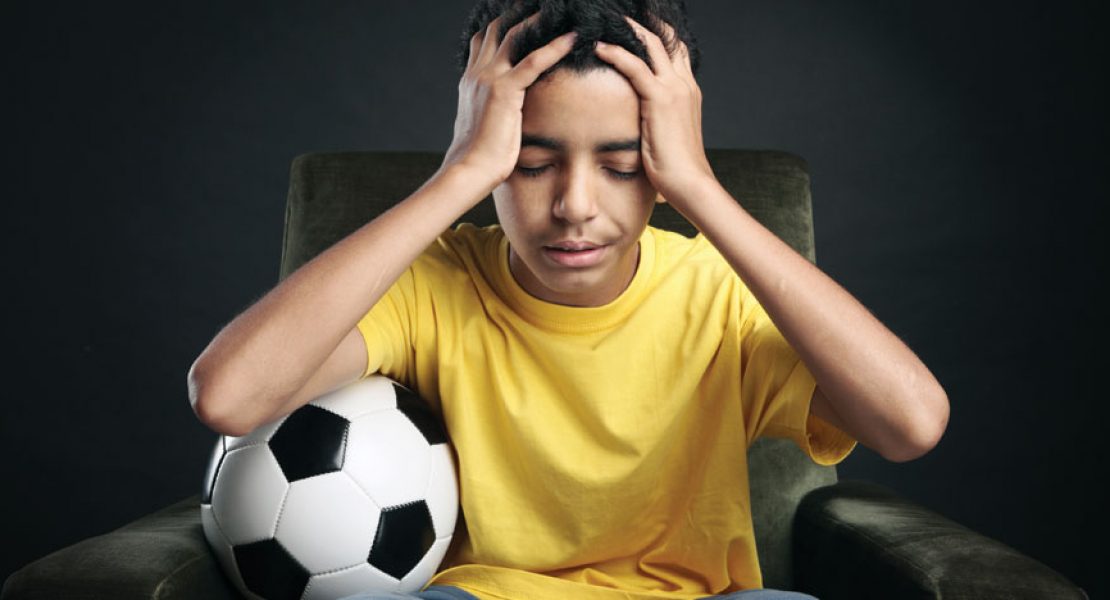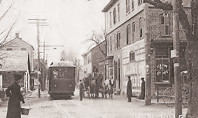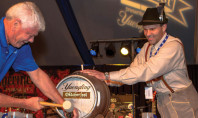Heads Up: A Guide to Concussions

By Laurie Teter
A concussion is a traumatic..brain injury (TBI).
Take a moment to digest that.
Any concussion is a traumatic brain injury. That statement paints a much different picture than the old school philosophy of, “It’s just a concussion.”
As the medical field continues to make new strides with cancer, heart disease and many other diseases, new information about concussions is coming to the forefront as well. “Historically concussions were not considered serious, but with more research we are discovering they are,” says Daniele Shollenberger, CRNP, Coordinator of the Concussion and Head Trauma Program at Lehigh Valley Health Network. “Ninety percent of concussions do not result in loss of consciousness, contradicting the myth that ‘you’re okay if you don’t pass out’,” explains Shollenberger.
Although concussions are usually caused by a blow to the head, they can also occur from a jolt to the body that causes the head to move rapidly back and forth. If your child is playing soccer and another player collides with his midsection hard enough that your child’s head – which rotates on his neck – moves forward and back, that can just as easily result in a concussion as a direct crack to the head.
What are the signs and symptoms of a concussion?
According to the Centers for Diseases Control and Prevention (CDC) if your child has experienced a bump or blow to the head or body during a game or practice, look for any of the following signs and symptoms of a concussions:
Signs
(observed by parent, coach, teammate)
• Appears dazed or stunned
• Is confused about assignment or position
• Forgets an instruction
• Is unsure of game, score or opponent
• Moves clumsily
• Answers questions slowly
• Loses consciousness (even briefly)
• Shows mood, behavior or personality changes
Symptoms
(reported by the athlete)
• Headache or “pressure” in the head
• Nausea or vomiting
• Balance problems or dizziness
• Double or blurry vision
• Sensitivity to light
• Sensitivity to noise
• Feeling sluggish, hazy, foggy or groggy
• Concentration or memory problems
• Confusion
• Just “not feeling right” or “feeling down”
If signs of a concussion are observed or symptoms are reported, an athlete should be immediately removed from play. The CDC guidelines for concussions in sports state: “when in doubt, keep the athlete out of play.” An athlete should never every go back to play with symptoms of a concussion and never return to any sports or recreational activities the same day. Parents and coaches should not attempt to judge the severity of the injury.
Health care professionals utilize a variety of methods to confirm and assess the severity of a concussion. Shollenberger relates the diagnosis of a concussion to that of diagnosing Lyme disease. “Wouldn’t it be nice if everybody that was bitten by a Lyme tick got the rash for Lyme disease [so we could easily make a diagnosis]? But they don’t. The same philosophy holds true with concussion. Because the vast majority of concussions do not result in the loss of consciousness, without further examination it’s difficult to determine if a concussion has been incurred.”
If you suspect your son or daughter has suffered a concussion, your child should be seen by a health care professional experienced in evaluating concussion. Your family physician or the Emergency Room are both viable options and either facility will refer you to a specialist if necessary. Most symptoms occur immediately but not all; some take 24 hours or longer. So even if your child doesn’t show any signs or symptoms of a concussion, keep an eye on him for at least 24 hours after a hard blow during a game or practice.
Concussion treatment varies based on severity. Shollenberger says most concussion sufferers will recover in two to four weeks but everyone responds differently. Treatment is individualized but the hallmark of initial treatment is physical and cognitive rest. In other words, rest the brain and the body.
“I remind kids all the time that if they twisted an ankle or broke a leg they’d be resting their leg and wouldn’t be running around or using that body part. Cognitive resting is the same idea but because concussions are invisible the concept can be difficult to grasp,” says Shollenberger. She regularly recommends limited use of electronics, including television, computers and video games, as well as no reading and several days’ rest before returning to school.
Although not everyone is aware of it, the Commonwealth of Pennsylvania enacted the Safety in Youth Sports Act in July 2012. The law requires all students participating in interscholastic athletics, school-sponsored cheerleading and school-based club sports, along with their guardians, to sign an acknowledgement of receipt and review of a concussion and TBI information sheet developed by the State.
Any student exhibiting signs or symptoms of a concussion must be removed from play and must be evaluated and cleared for return to participation, in writing, by an appropriate medical professional. Schools are encouraged to hold informational meetings prior to each athletic session regarding concussions and other head injuries, and once each school year coaches are required to complete a concussions management certification training course. While sponsors of youth athletic activities are not specifically addressed by the act, they are encouraged to follow the same guidelines.
Despite the growing awareness of concussions, much confusion and controversy still exists regarding diagnosis and recovery. Collaboration between coaches, athletes, parents and health care professionals will be necessary to keep student athletes as safe as possible. “When a concussion is managed properly, you will get better,” encourages Shollenberger.

















